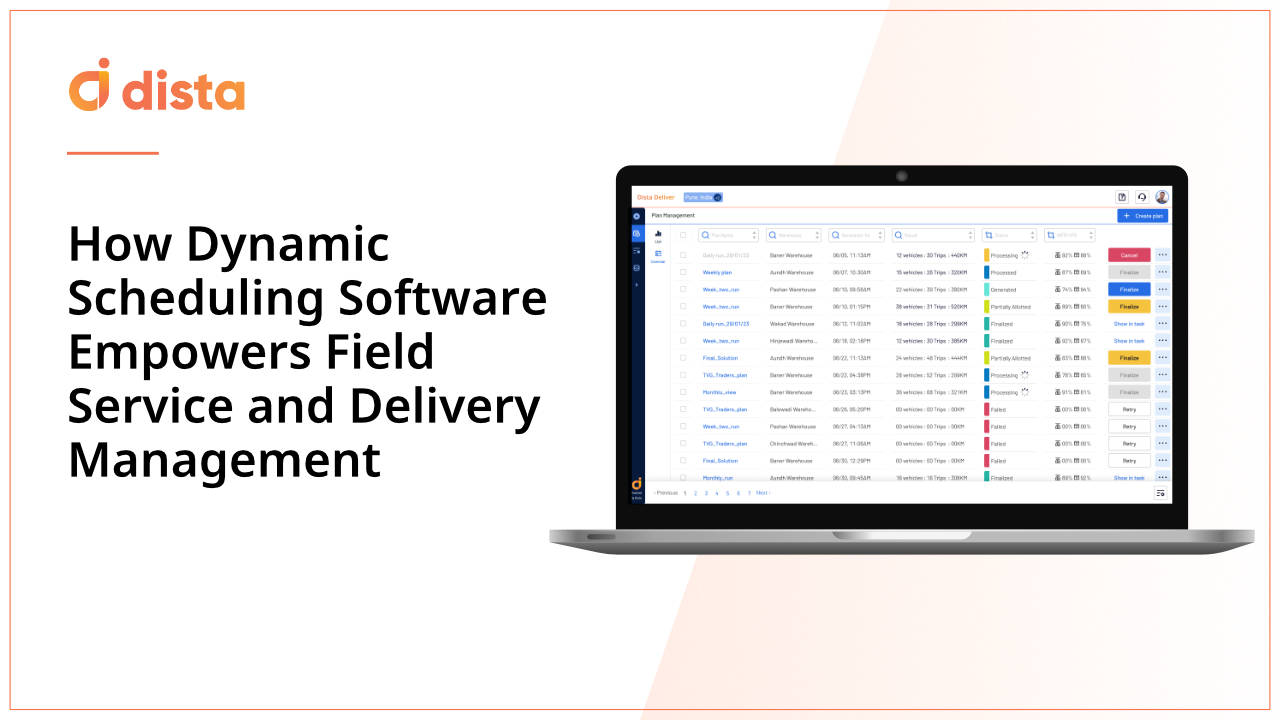Challenges Related to Scheduling in Field and Delivery
Some key challenges that influence scheduling and dispatch of field service activities are:
- Which technician is nearest to the location?
- Does he have the right skill for the task?
- What are the SLAs involved?
- Is the task a priority or can be assigned later?
- Is it a high value customer or critical account?
- What is the best route that the technician can opt for?
- How do you schedule multiple orders for optimized results?
- How are the technician schedules – are they working, on holiday, in training, at meetings, etc?
Given the complicated nature of scheduling field jobs which can run into multiples with the rise in on-demand deliveries, an automated field service dispatch software has now become a necessary investment. Earlier, with the delivery culture not very strong, technicians could manage with manual scheduling and a few phone calls. But today the landscape has drastically changed. Customers expect quicker deliveries, timely deliveries. Managing these changing delivery windows becomes rather difficult with manual scheduling.
How Dynamic Scheduling Helps
Empowered with technology, smart and automated scheduling offers a much efficient ecosystem to orchestrate field deliveries and field jobs with better efficiency. Smaller organizations may still make use of manual methods for scheduling and dispatch but when it comes to e-commerce giants, dynamic scheduling is the preferred and go-to tool. Automated scheduling tools can easily manage thousands of technicians, by using intelligent algorithms and workflows to distribute multiple tasks as well as provide real-time tracking. Dynamic scheduling is designed to take care of sequencing based on priority, skill and availability of the technician. No wonder it leads to better results and improved field performance.
Capabilities of an Intelligent Scheduling and Dispatch Software
An automated scheduling software system comes loaded with a variety of features that are aimed to optimize field service delivery.
Let us go in detail and understand some prominent capabilities of a dynamic scheduling tool:
1) Automated Job Sequencing and Allocation
2) Route Optimization
Another great capability that an automated dispatch system offers is providing optimized route plans to the technicians. This imparts a lot of flexibility to your field allocation as you can accommodate ad hoc requests as well as provide the best routes to your field technicians to achieve maximum output in a given day. Further, it brings huge savings on cost, fuel and technician idle time.
3) Live Tracking
4) Dashboard and Reports
5) Mobile Functionality
Did you know that even today 50% of field service organizations do not offer any mobile interface to their field teams? With mobile consumption steadily on the rise, it only makes sense to ensure that you provide your technicians with mobility edge in the field. This gives your field and delivery teams to be more agile to accommodate any changes and new updates on the fly. This greatly empowers the scheduling operations as there is greater transparency and visibility with regards to who is on the field, serving which customer and who is not. The mobile interface acts as a single point offering 360 degree view of the field operations.
Fueled by artificial intelligence, Dista scheduling and dispatch software helps you to schedule and dispatch the right field resource / technician with the right skills to the right job at the right location, and makes automatic adjustments if issues arise – all in real time.






